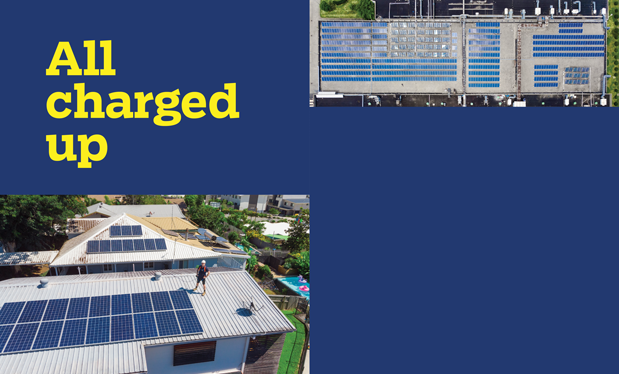Hidden from interior view for almost 60 years, the dome on historical Fayette County Courthouse in Lexington, Ky., recently was restored and revealed to the public. Closed in 1960 to house HVAC equipment, the dome was renovated as part of a $32 million project to restore Lexington's historical courthouse.
Built between 1898-1900, the building is an example of Richardsonian Romanesque-style architecture and is the largest of its type in Kentucky. Throughout the years, the building's space became less than optimal for courtroom use. Consequently, during the 1960s, the facility was remodeled, compromising much of its original character, including sealing off the rotunda and removing a grand marble staircase.
For almost a century, the building served as the city's courthouse before it permanently closed in 2002. The building remained vacant for years until 2016 when the city unveiled plans to renovate the building and transform it into a "hub of public and private market-driven activity."
Plans included a Lexington Visitor's Center, restaurant, bourbon bar, leasable office space, top-floor event space to accommodate 300 people, two-floor atrium, décor lighting inside and outside of the building, and glass floors to allow visitors to view the dome restored by American Roofing and Metal Co. Inc., Louisville, Ky., and Steinrock Roofing and Sheet Metal Inc., Louisville.
Rebuilding history
American Roofing and Metal was awarded the historical Fayette County Courthouse roof system renovation project by general contractor AU Construction LLC, Lexington. To complete the work within the stipulated six-month time frame, American Roofing and Metal partnered with Steinrock Roofing and Sheet Metal.
American Roofing and Metal workers repaired the supporting structure and installed new slate roof systems on the main building's roof and dome while Steinrock Roofing and Sheet Metal workers restored the building's intricate copper components and weathervane.
American Roofing and Metal
When American Roofing and Metal began its work in August 2016, Rick Steinrock, CEO of American Roofing and Metal, knew the project would require meticulous, thoughtful planning throughout every phase of work.
"We were up for the challenge and excited to begin work on this intriguing project," Steinrock says. "Based on the building's unique shape and the four-story height of the main building, we understood engineering the scaffolding was going to be an important key to performing the work successfully and safely."
American Roofing and Metal retained the expertise of a scaffolding contractor to construct scaffolding around the main building.
"We had them build two 20- by 20-foot loading platforms at the top level of the scaffolding," Steinrock says. "Additionally, to replace the copper cornice molding after the roofing material was in place, the scaffolding had to be constructed just a couple of inches below the existing cornice metal."
After the crew established safe access, materials were lifted via crane to the first scaffolding platform and then transported using a hoist or hand-carried to proper locations.
Next, American Roofing and Metal workers removed the original Buckingham® Slate from the main building's roof. Because the slate was 60 years old—relatively young for slate roofing—the crew reclaimed as much of it as possible.
Workers then made necessary repairs to the plywood deck. Because there was no insulation in the open plenum ceiling, two layers of 2-inch-thick polyisocyanurate insulation were added to help conserve energy.
To create the roof deck, the American Roofing and Metal crew installed another layer of 3/4-inch-thick plywood followed by a polymer-modified bitumen base sheet to serve as underlayment. Workers then installed 24- by 13- by 3/8-inch Buckingham Slate.
After completing the main roof system, crews moved up to the dome. The scaffolding crew built additional scaffolding on top of the main roof area and alongside the central dome to the cornice level. This also required interior shoring from the roof deck to the concrete floor to minimize the load the scaffolding would place on the roof deck.
After safely reaching the dome and cupola, workers discovered structural issues.
"We have learned during our history with unique projects to expect unexpected challenges, and this project was no different," Steinrock says. "We ran into some serious structural issues on the dome and cupola that required the steel framing contractor to add steel components to compensate for years of water damage. Additionally, American Roofing and Metal workers replaced the entire wooden roof deck and some structural members on the cupola and rebuilt about 20 percent of the wooden cornice gutter on the main building."
With an almost vertical face, the dome's slate roof system and cupola presented more unique challenges.
"The original slate was wired on to a 2- by 2-inch angle iron, and the copper wires had a head on them like a nail," Steinrock explains. "The copper wires were pushed through the nail hole in the slate, down along the back side of the angle iron and then folded around the bottom edge of the angle iron. The exposure on the slate was 7 inches, so the spacing on the angle iron was 7 inches on center. The angle iron effectively was holding those heavy slate tiles in place."
After removing the original slate, workers installed 1- by 4-inch wood lathe strips vertically from the top of the dome to the bottom, placing two screws at every other angle iron (cross-sections of L-shaped steel). The strips were spaced 24 inches on center horizontally. Using glue and screws, a second layer of strips then was attached. Workers then secured three layers of 3/8-inch-thick plywood. Next, workers applied self-adhering Grace Ice & Water Shield® underlayment over the plywood followed by 8- by 16- by 3 3/8-inch Buckingham Slate.
Steinrock Roofing and Sheet Metal
Meanwhile, the Steinrock Roofing and Sheet Metal crew was working diligently to restore historical Fayette County Courthouse's copper components.
Craftsmen began with photographing and then removing the building's various architectural details, including column capitols, corbels, curved crown molding and collars.
A full-scale 23-foot-wide replica of the cupola's base was built in Steinrock Roofing and Sheet Metal's fabrication shop to ensure precise fitting of all parts and pieces, including wooden jigs built to reproduce the cupola's molding and corbels. The molding consisted of 653 hand-cut, curved pieces that were assembled using solid copper Tinners Rivets. Each piece then was soldered and buffed to produce an exact reproduction of the original ornate molding. Molds for the column capitols were made from original pieces and then stamped and assembled.
To replicate the cupola's original design, workers clad it with soft copper in flat-locked panels. Then, they created another mold to reproduce 260 feet of the ornamental hip cap for the dome's slate roof system. In addition, 840 linear feet of 20-ounce copper were used to fabricate and install the cornice gutter.
All copper components were hand-cut in the off-site sheet metal shop, carefully transported to the job site and installed by two-person crews.
Steinrock Roofing and Sheet Metal workers also restored the courthouse's weathervane that had been removed during the 1990s. Sourcing a replica of the galloping horse featured on the original weathervane required extensive research.
"Throughout the years, the leading weathervane manufacturers who primarily were located in the Northeast had closed their businesses," says Kristen Vittitow, chief financial officer for Steinrock Roofing and Sheet Metal. "Their original molds had been sold again and again, making it impossible to locate the mold for the original 50-inch-long running horse. Fortunately, we found a vendor in Missouri who had a mold for a copper horse replica of a similar scale."
While waiting for the casting of the horse, workers fabricated other weathervane components. The 12-inch copper directional letters were hand-cut, soldered and polished, each letter requiring 12 hours to fabricate. Small 1/8- by 1-inch copper-backed plates with stainless-steel studs were soldered to the letters and then mounted to the weathervane's directional rods that were adorned with hand-bent aluminum scrolls to match the original design.
Sheet metal workers constructed the weathervane's finial base with spun copper, and the segmented oval sphere on top was hand-cut and soldered. The 13-foot-tall weathervane assembly was fabricated from multiple sizes of 1/4-inch-thick aluminum tubing and 1/4- by 1 1/2-inch curved aluminum bar stock. A 1-inch-thick, milled, solid stainless-steel rod was set in the top of the aluminum pole to accommodate the arrow and horse. Workers used stainless-steel sleeves to isolate all dissimilar metals and treated wood blocking.
"Fabricating the finial assembly to accommodate the 170-pound weathervane certainly was one of the more challenging tasks of this project," says Tim Steinrock, owner of Steinrock Roofing and Sheet Metal. "Numerous man-hours were consumed with reproducing the landmark weathervane and tending to historical details. We used more than 10,700 pounds of copper on the entire project."
To assemble the weathervane, the Steinrock Roofing and Sheet Metal crew constructed a 25-foot-tall derrick and transported it to the job site, where it was erected on top of the 136-foot-tall scaffolding.
The weathervane, directional arrow and horse assembly then were hoisted and lowered in place. Because the scaffolding was scheduled for demolition, workers had an added difficulty of mounting the weathervane on a blustery December day; temperatures dipped below 27 F, and the winds were 12 to 15 mph.
"The weather contributed to the drama of the day's work, literally freezing the crew's cell phone cameras," Vittitow says. "Mounting the weathervane on the massive copper finial had been well-rehearsed at our sheet metal shop using a wooden derrick. It was truly spectacular to see the running horse spin atop the courthouse in the heart of thoroughbred country after more than two decades of absence."
An honorable legacy
In January 2017, American Roofing and Metal and Steinrock Roofing and Sheet Metal completed their work on historical Fayette County Courthouse one month ahead of schedule and under budget, a testament of successful teamwork. Working together, crews overcame logistical, structural and weather challenges to restore a historical landmark for the Lexington community that will be enjoyed for generations to come.
"In Kentucky, there are not many projects with this level of difficulty and size, so it was a unique job in this market," says Josh Steinrock, president of American Roofing and Metal. "My father [Rick Steinrock] and uncle [Tim Steinrock] worked together on this project, and it was extremely rewarding for our entire company to have our family work together on such a difficult, historical project for our community."
On June 14, a ribbon-cutting ceremony was held to officially open the Lexington Visitor's Center, which features the restored dome, a multimedia technology center, a host of interactive exhibits about Lexington's history in the bourbon and horse industries, and more.
"I am happy to report everyone is extremely pleased with the outcome of the project," Rick Steinrock says. "The historical Fayette County Courthouse is a unique and beautiful building. It was a privilege, as well as a lot of fun, to perform the work that we now can point to with pride."
For demonstrating exceptional craftsmanship and collaboration on historical Fayette County Courthouse, The Roofing Industry Alliance for Progress jointly awarded American Roofing and Metal and Steinrock Roofing and Sheet Metal a 2018 Gold Circle Award in the Outstanding Workmanship: Steep-slope category and an honorable mention in the Innovative Solutions: Reroofing category.
Project name: Fayette County Courthouse
Project location: Lexington, Ky.
Project duration: August 2016-January 2017
Roof system type: Slate with copper components
Roofing contractors: American Roofing and Metal Co. Inc., Louisville, Ky., and Steinrock Roofing and Sheet Metal Inc.,
Louisville
Roofing manufacturers: Buckingham® Slate Co., Arvonia, Va.; GCP Applied Technologies Inc., Cambridge, Mass.



